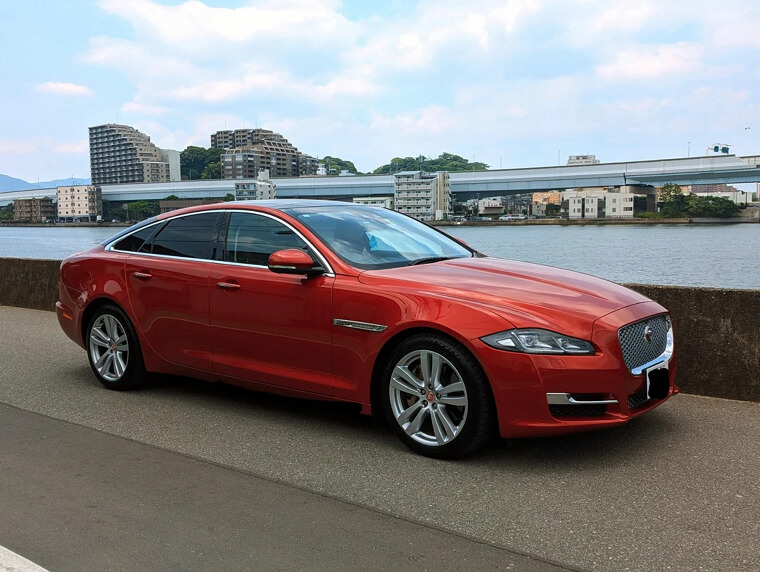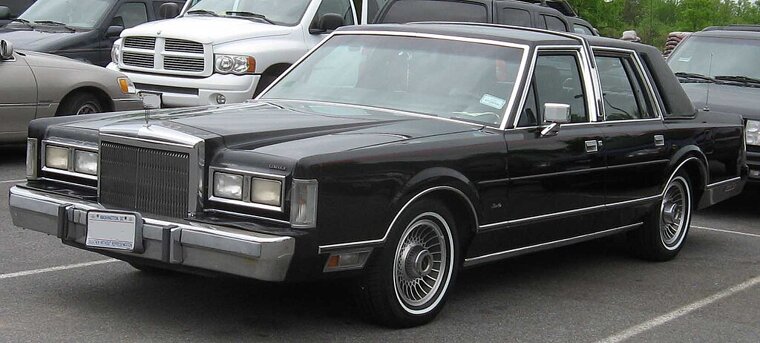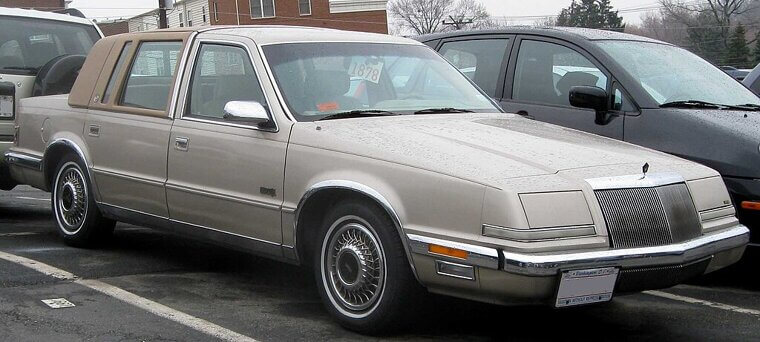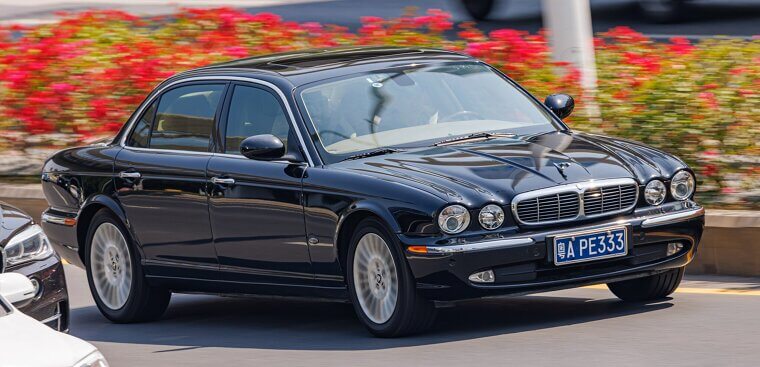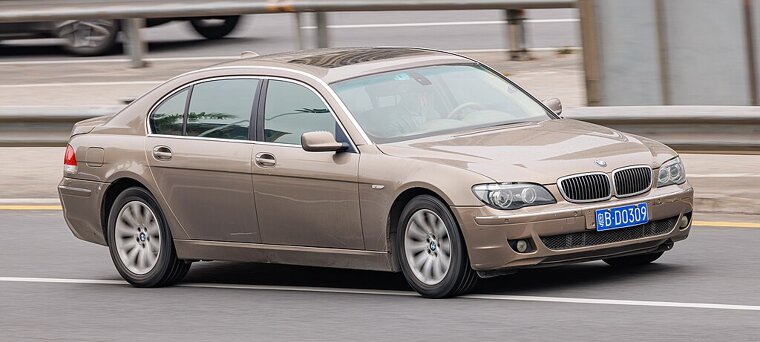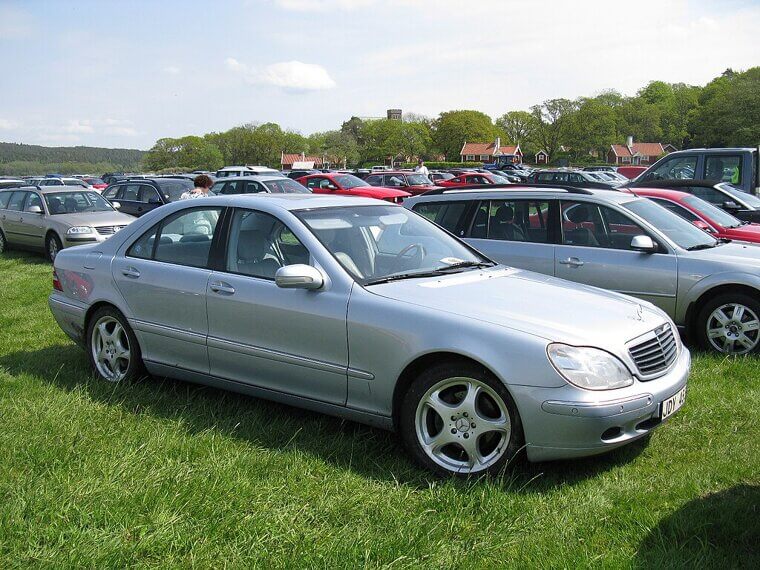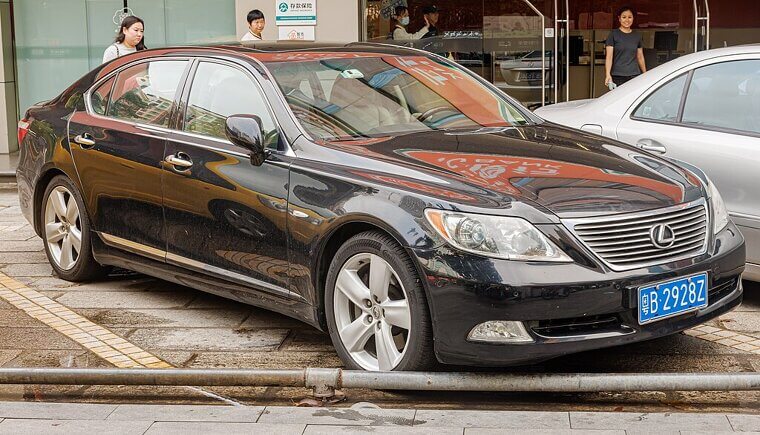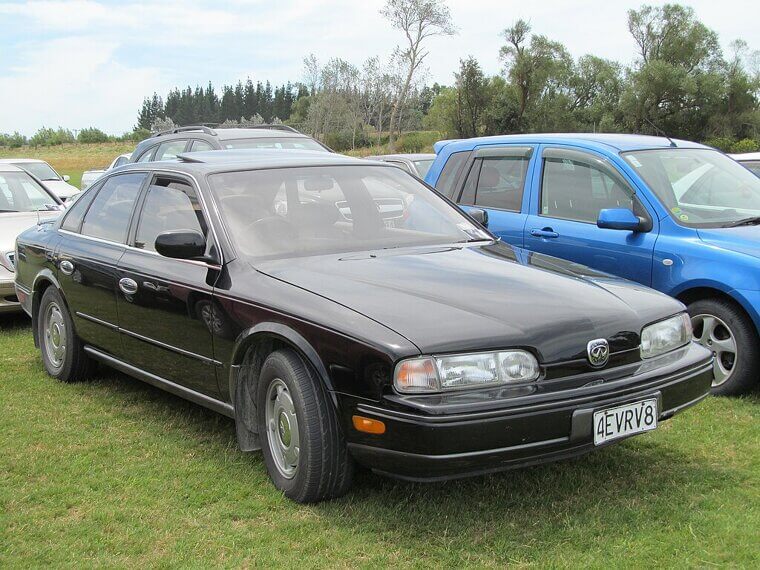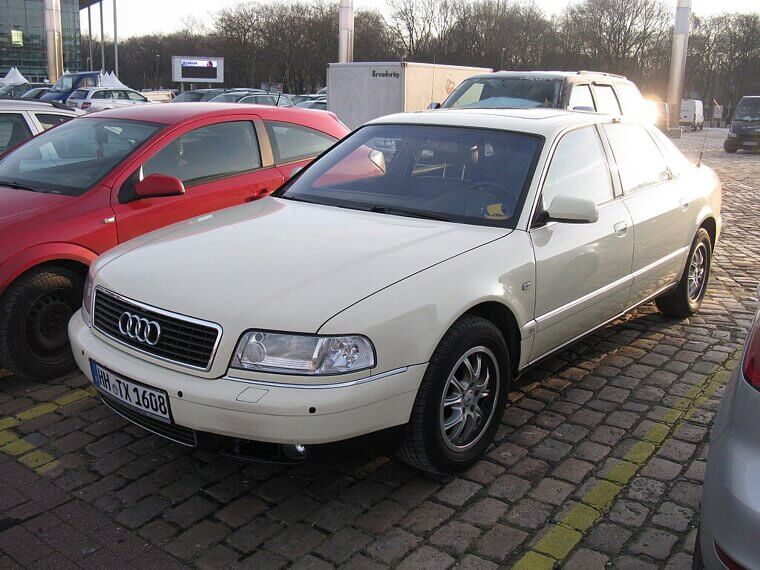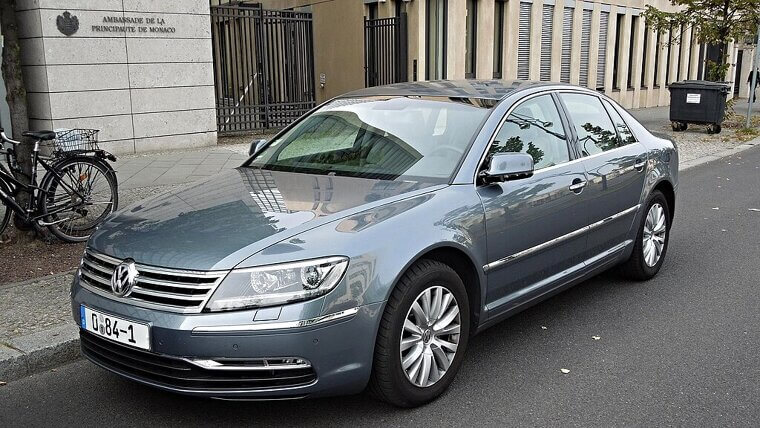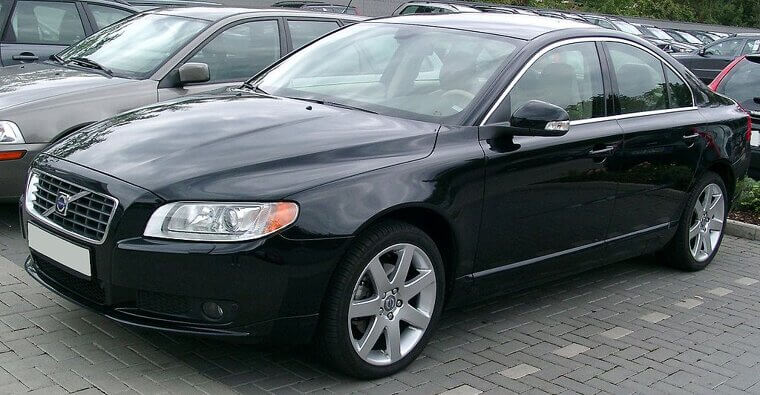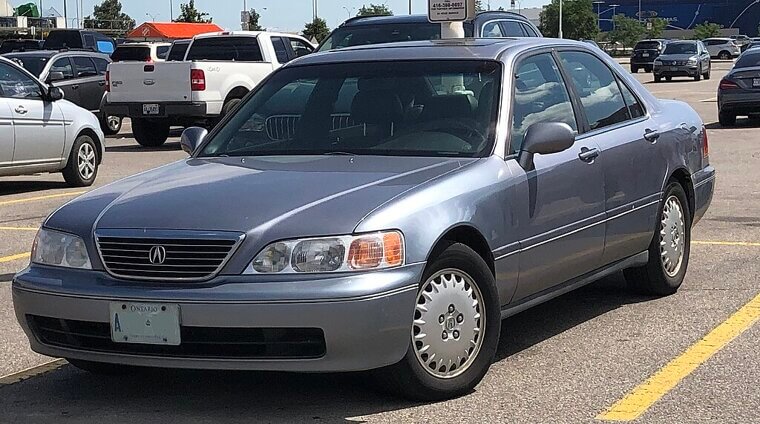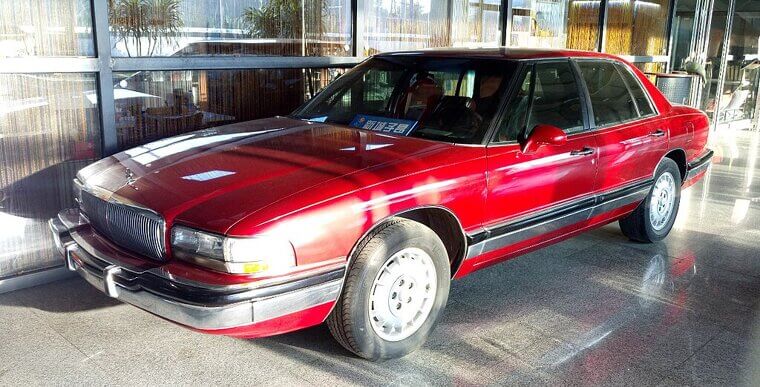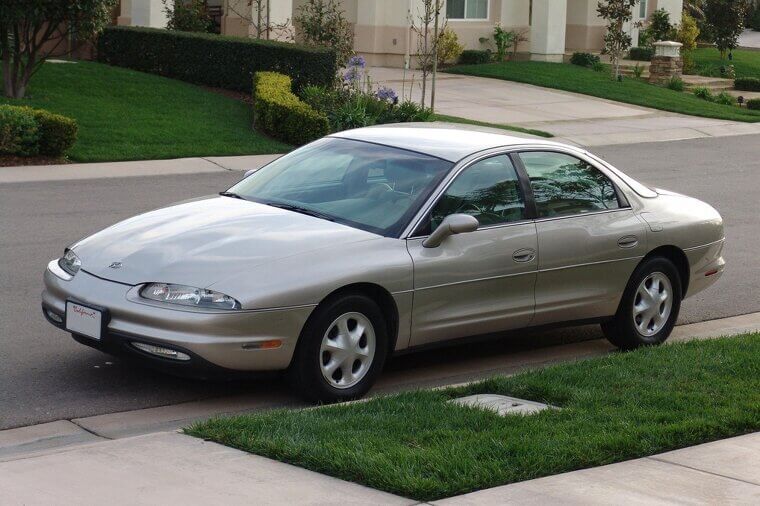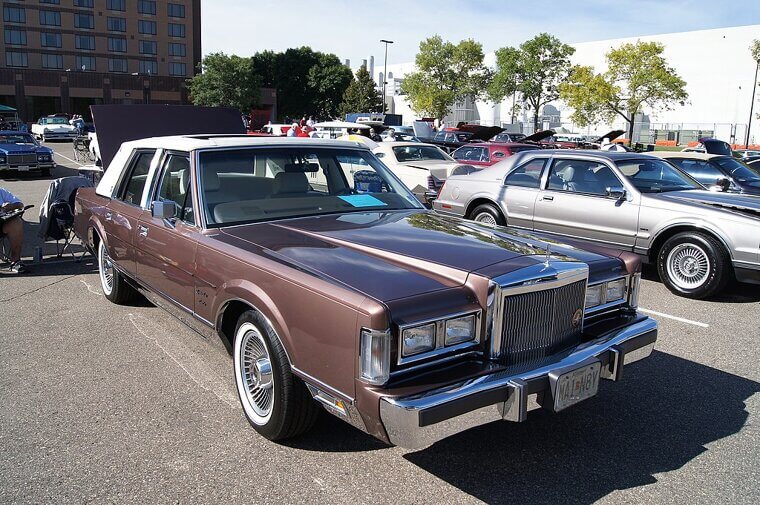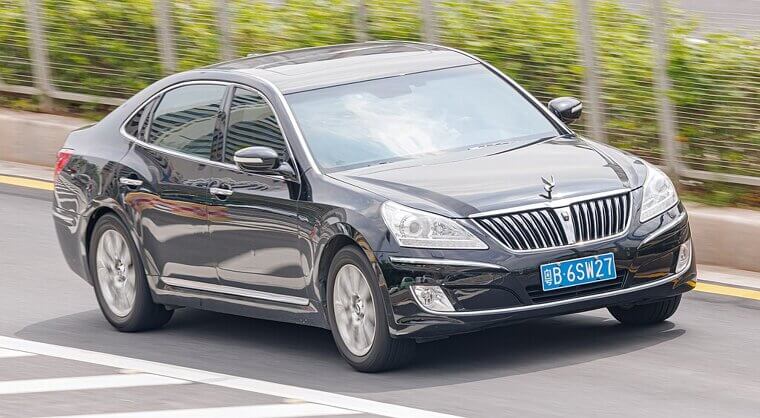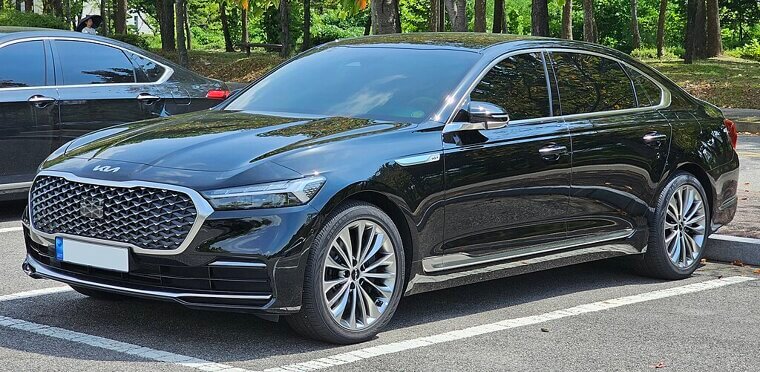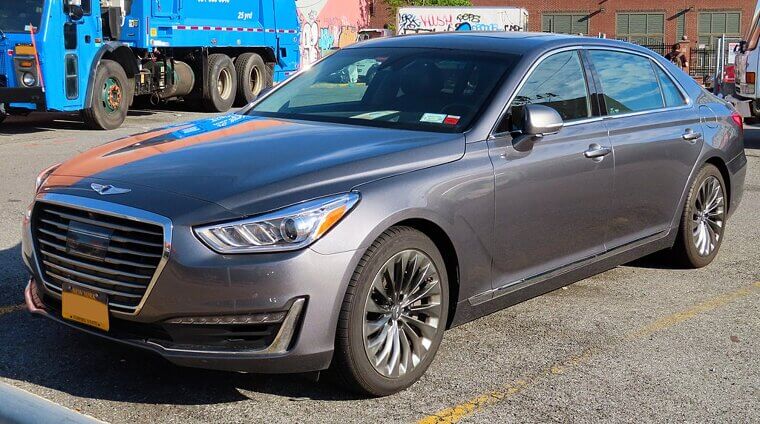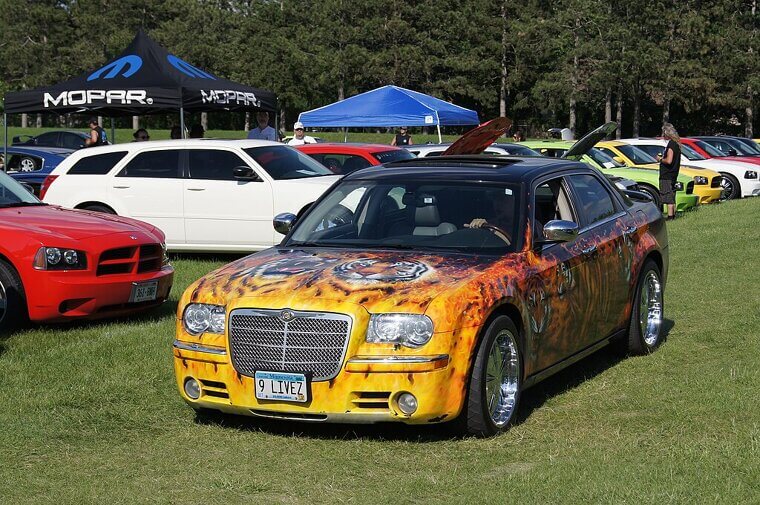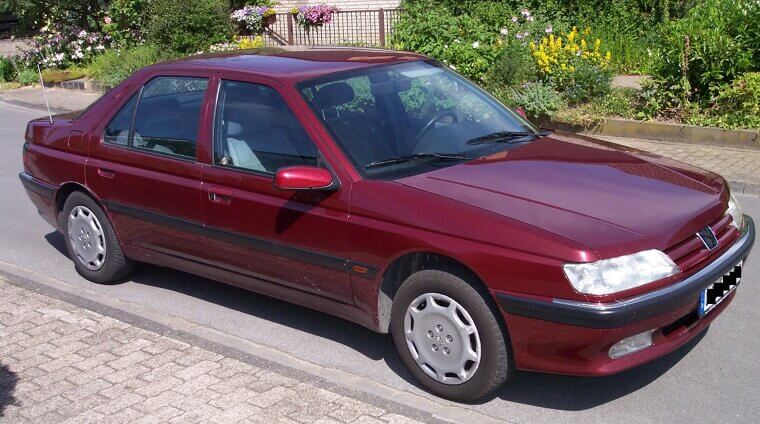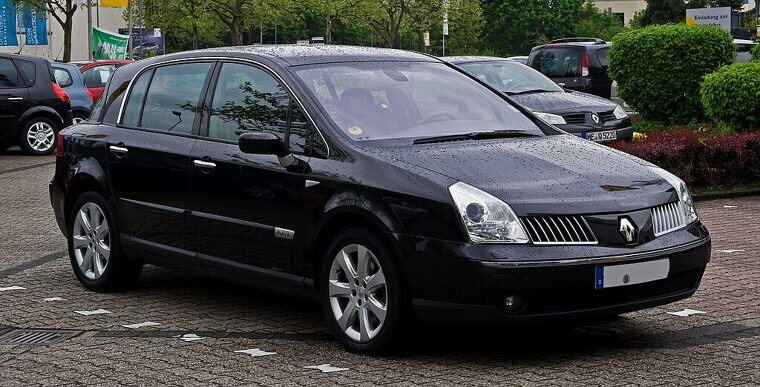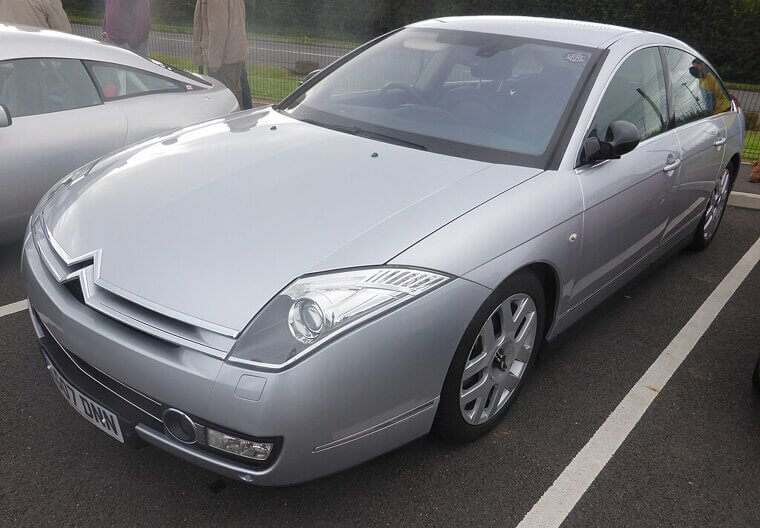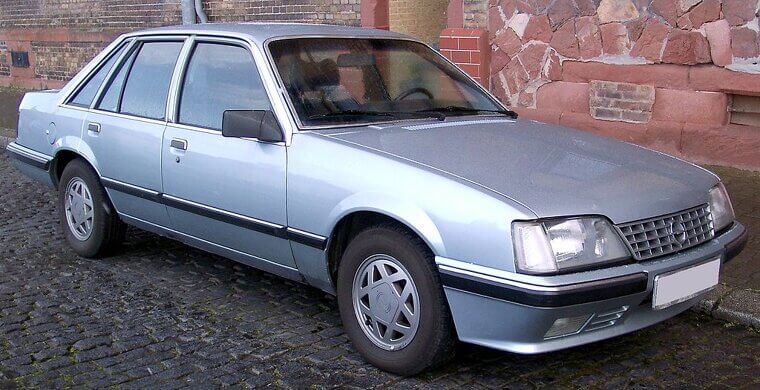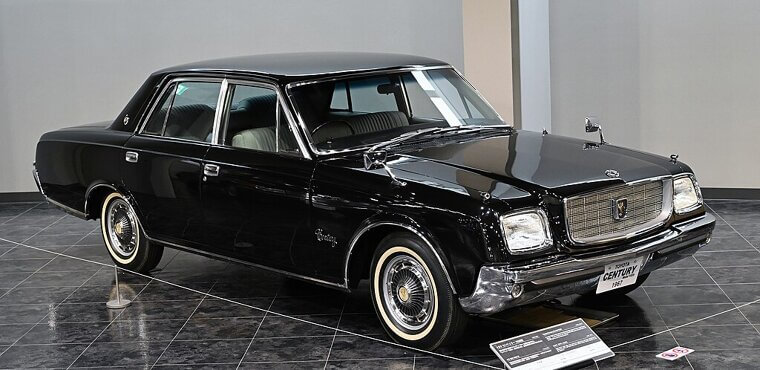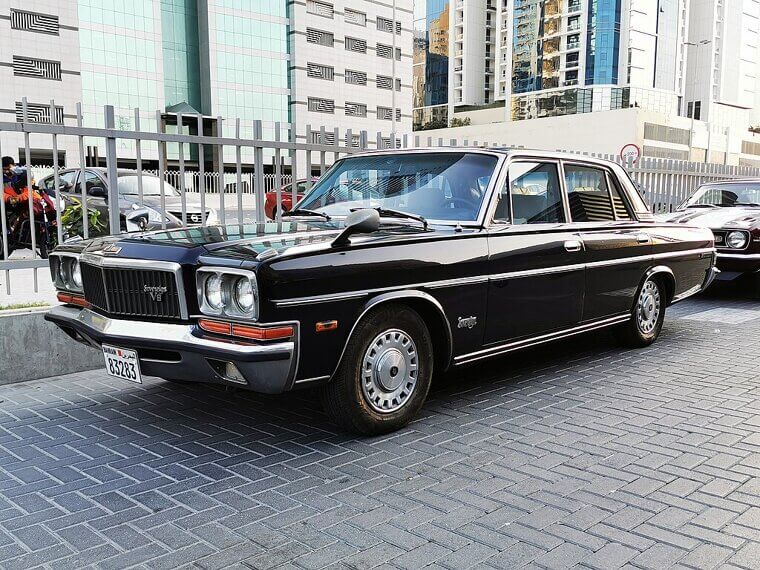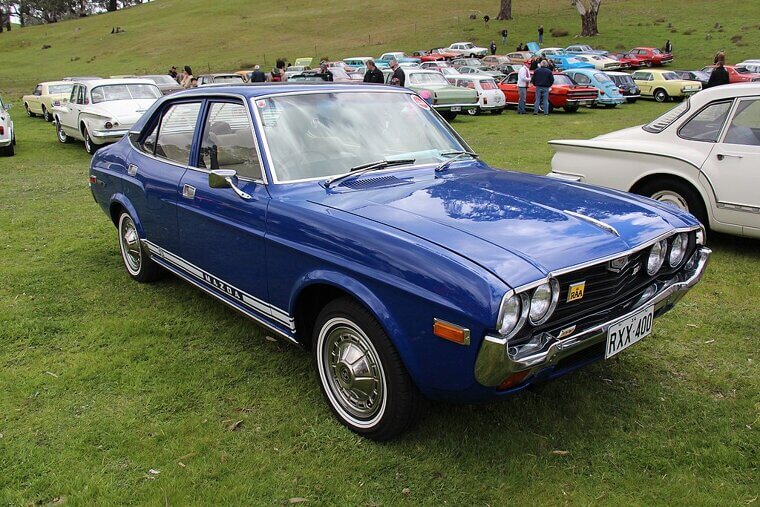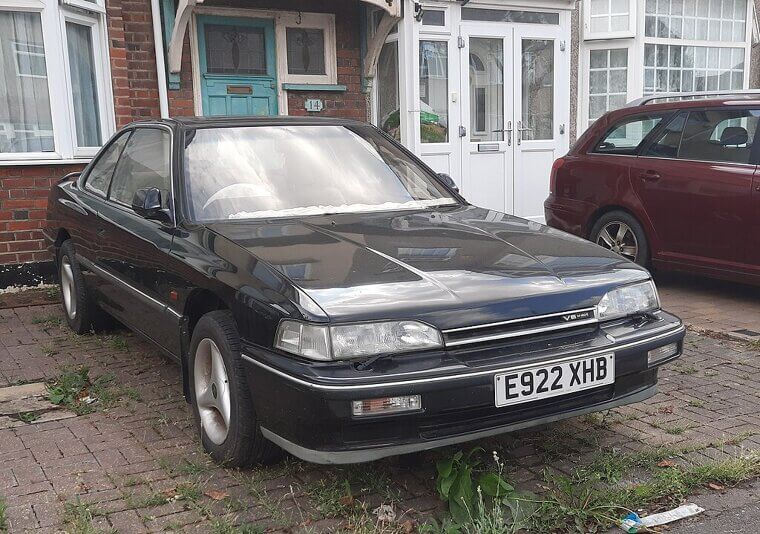Once Prestigious, Now Hard-To-Sell Cars
Once these cars roared down boulevards with chrome-plated confidence, ferrying executives, movie stars, and wannabes who loved a little valet-lane glory. Today, many sit unloved in classifieds, their prestige long expired, their repair bills terrifying, their curb appeal dulled. These were the kings of cool; now they’re quietly waiting for a buyer brave enough to take them home.
Cadillac Seville (1975–2004)
Previously Cadillac’s “European fighter,” the Seville promised sophistication, then ended up with fake wire wheels, overstuffed interiors, and electronics that aged badly. Today, its “status” is mostly as an unsellable Craigslist post nobody replies to; a four-wheeled ghost of the days when Cadillac still thought it was king.
Lincoln Town Car (1981–2011)
This yacht-sized sedan screamed prestige in the Reagan era - long, soft, and cushy. It was the choice of bankers and limo fleets, now the Town Car struggles for buyers outside funeral homes and nostalgia buffs. Owning one today feels less like luxury and more like buying a wheeled, beige leather couch.
Chrysler Imperial (1990–1993)
Chrysler tried reviving Imperial grandeur with a boxy, slab-sided luxury sedan that mostly screamed “rental upgrade.” It was heavy, over-styled, and sold poorly. Now, Imperials linger like unsold prom dresses: too awkward for anyone to wear, except maybe ironically at a Radwood show.
Jaguar XJ (X350/X351, 2003–2019)
The XJ had the badge, the wood, and the leather, but reliability was a pure dice roll. Later models looked too modern for traditionalists and too old-fashioned for everyone else. It’s the luxury sedan equivalent of a dusty bottle of sherry - still around, but rarely poured.
BMW 7 Series (E65/E66, 2001–2008)
The “Bangle Butt” 7 Series was bold, polarizing, and packed with early iDrive that confused even tech-savvy owners. It depreciated faster than a brick in freefall. Yesterday’s CEO chariot now languishes on used lots, shunned by buyers wary of repair bills that rival a year’s salary.
Mercedes-Benz S-Class (W220, 1998–2005)
Once the undisputed luxury flagship, the W220 introduced groundbreaking tech - and equally groundbreaking repair nightmares. Rust, electronics, and failing air suspension turned prestige into panic. Today, cheap examples tempt buyers with dreams of rolling in style, until reality serves up a repair estimate larger than the purchase price.
Lexus LS 400/430 (1989–2006)
In the ’90s, nothing said “quiet wealth” like a Lexus LS. Refined, reliable, and subtle, it redefined luxury. These once-sharp sedans often sit unsold because buyers want SUVs. Still, LS ownership remains appealing… but only if you accept you’re buying a status symbol from when CD changers were exciting.
Infiniti Q45 (1990–2006)
Nissan’s bold bid to match the Germans, the Q45 arrived with a V8 punch and understated style, but Infiniti never built the cachet to back it up. These days, the Q45 gathers dust on classifieds, a forgotten reminder of what happens when great engineering meets poor branding.
Audi A8 (D2/D3, 1994–2010)
The aluminum-bodied A8 looked sleek, felt exclusive, and gave executives quattro confidence. Unfortunately, depreciation and sky-high repair costs mean today it’s cheaper than an old Civic… until the transmission explodes. Once Audi’s flagship, now it’s the sad sedan sitting unsold behind a buy-here-pay-here lot.
Volkswagen Phaeton (2002–2016)
VW decided it needed a limo to rival Bentley - then priced it like one, slapped on a VW badge, and wondered why no one bought it. Overengineered, overcomplicated, and overpriced, the Phaeton is a status ghost: admired by nerds, ignored by buyers, and impossible to sell at book value.
Maserati Quattroporte V (2003–2012)
Elegant, fast, and capable of bankrupting its owner before the first oil change, the Quattroporte V wooed buyers with Ferrari engines and Pininfarina curves, but its maintenance appetite was carnivorous. Once the glamorous Italian alternative to German sedans, now it sits with a five-figure repair bill waiting in the wings.
Bentley Arnage (1998–2009)
A leather-wrapped living room with twin-turbo power, the Arnage screamed “old money.” But as fuel prices soared and tech marched on, its aristocratic charm faded. Today, these giant Bentleys loiter unsold, their values torpedoed by terrifying upkeep costs.
Rolls-Royce Silver Spirit/Spur (1980–1999)
Once the very picture of upper-class luxury, the Silver Spirit and Spur risk looking like slightly bloated ’80s sedans with picnic tables. Their prestige has evaporated faster than their hydraulic fluid. Today, these stately Rollers sit in classifieds, mostly because no one wants a mortgage-sized repair bill attached.
Saab 9000 CD Griffin (1984–1998)
The 9000 CD Griffin was Saab’s stab at luxury respectability - a quirky Swede in executive clothes. Plush interiors, turbo power, and eccentric charm couldn’t match German badge prestige. A niche choice for the offbeat professional in its heyday, it’s more likely to be rotting in a driveway.
Volvo S80 (1998–2016)
A sensible flagship that screamed “solid accountant” rather than “jet-set mogul.” Comfortable, safe, and terminally dull, the S80 was Volvo’s luxury gamble that never cashed in. Today, unsold examples sit gathering dust, proving that even if you build the world’s most cautious limousine, nobody lines up for a secondhand one.
Acura RL (1996–2012)
Honda’s luxury flagship offered smooth V6 power, reliability, and… not much else! The RL was fine, just never aspirational. Once a quiet alternative to Lexus, now it’s invisible, a forgotten sedan that whispers “responsible choice” in a market that shouts “SUV or bust.”
Buick Park Avenue (1991–2005)
In its prime, the Park Avenue was the Midwestern Cadillac: plush, spacious, and deeply respectable. But as buyers ditched big sedans, it faded into irrelevance. Today, its former prestige has curdled into grandparent nostalgia. Unsold examples linger like fruitcakes at Christmas: now politely avoided.
Oldsmobile Aurora (1994–2003)
With its sleek styling and modern engineering, The Aurora was Oldsmobile’s Hail Mary, a last-ditch effort to lure younger buyers. It was good, but it wasn’t enough. Once hyped as Olds’ future, it’s a relic of GM’s past, sitting unsold as the world collectively forgot both the Aurora and the brand.
Lincoln Continental (1988–2002)
The Continental once meant swagger: JFK’s limo, luxury embodied. However, by the late ’80s and ’90s it had devolved into a soft, anonymous blob. What was once a presidential ride became a parking-lot punchline. Now it’s a reminder that prestige can go out of fashion as quickly as tailfins.
Cadillac Eldorado (1992–2002)
Cadillac’s halo coupe, the Eldorado oozed American excess with sharp styling and big V8s. By the ’90s, though, it felt like a relic - bloated, front-wheel drive, and appealing mostly to retirees. These prior driveway trophies now sit unsold, their glory long since traded for chrome nostalgia.
Hyundai Equus (1999–2016)
The Equus was Hyundai’s moonshot: “Look, we can do luxury too!” Plush, quiet, and stuffed with gadgets, it impressed on launch. Yet prestige doesn’t arrive overnight. The Equus’ many unsold examples feel like corporate experiments left behind, a luxury car without the luxury aura.
Kia K900 (2012–2020)
The K900 tried to out-Lexus Lexus, with V8 power, leather everywhere, and a sticker price that made jaws drop (in confusion, not awe). Buyers just couldn’t picture a Kia at valet. It was a bold - if misplaced - status play left to languish, forgotten.
Genesis G90 (2015–2023, First Gen)
Genesis hit hard with the G90: handsome, feature-laden, and aggressively priced. For a moment, it looked like a real threat to the establishment. But prestige is sticky stuff, and resale values weren’t impressed; G90s struggle to sell, their image caught in the gap between ambition and acceptance.
Chrysler 300C (2005–2010)
When it landed, the 300C was a sensation - gangster chic on 20-inch wheels, a Detroit brick with Bentley vibes. Alas, time hasn’t been kind. A former driveway flex, it’s now a Craigslist regular. Unsold examples linger, their chrome dulled.
Pontiac Bonneville SSEi (1992–2005)
Pontiac’s big sedan dressed up with supercharged swagger, the SSEi was meant to be sporty and sophisticated. In reality, it was a plastic-laden bruiser with fading cachet. A top-shelf badge in Middle America has turned into an unsold afterthought, remembered mostly by the people who bought them new.
Peugeot 605 (1989–1999)
Peugeot aimed squarely at the German giants with the 605, offering space, comfort, and French flair. But reliability demons and a lack of badge pull doomed it. Peugeot’s hope ended up mostly as unloved fleet fodder, and unsold survivors sit like forgotten artifacts of misplaced Gallic ambition.
Renault Vel Satis (2001–2009)
Equal parts bold and bizarre, the Vel Satis looked like the lovechild of an SUV and a bread van. Renault called it visionary; buyers called it weird. Avant-Garde marketing couldn’t prevent Vel Satises gathering dust, a reminder that daring design and desirability aren't exclusive.
Citroën C6 (2005–2012)
The C6 oozed French eccentricity: hydropneumatic suspension, spaceship looks, and interiors fit for a philosophy professor. Presidents loved them; customers didn’t. Citroën’s flagship it bombed commercially, leaving unsold examples as curiosities.
Opel Senator (1978–1993)
For a while, the Senator was Opel’s bid for respectability - executive size, smooth sixes, proper presence. But prestige slipped through its fingers, overshadowed by BMW and Mercedes. In the modern era unsold Senators are stranded, and rarely earn a second glance.
Toyota Century (Pre-2018 Models)
Japan’s ultimate chauffeur car, the Century was quietly magnificent: wool seats, V12 engines, and dignity incarnate. But outside Japan? Invisible. Older models sit unsold abroad, misunderstood as quirky imports rather than cultural icons. Prestige doesn’t always translate across borders.
Nissan President (1965–2010)
Japan’s answer to the Cadillac Fleetwood, the President was a long, stately barge built for politicians and plutocrats, but its fame didn’t breach the country’s borders.Today unsold examples sit obscure, overshadowed by the Toyota Century - the rival that owned the luxury crown from the start.
Mitsubishi Debonair (1964–1999)
With a name promising suave sophistication, the Debonair should’ve been Japan’s continental contender. Instead, it looked dowdy, drove plain, and aged poorly. It was designed to chauffeur CEOs, but became a company car punchline.
Mazda 929 (1973–1997)
Mazda’s luxury effort tried hard, offering plush interiors and smooth styling, but prestige never quite arrived. Overshadowed by Toyota and Nissan’s flagships, the 929 was destined to be a “nice car” rather than an aspirational one.
Subaru SVX (1991–1996)
With its sleek Giugiaro body, wild “window-within-a-window” glass and a big flat-six, the SVX looked like the future. However, it was too weird, too thirsty, and too pricey. This bold halo coupe is loved by cult fans but ignored by everyone else, like a spaceship stranded on Earth.
Honda Legend (1985–2012, 3rd/4th Gen)
The Legend was Honda’s prestige project - refined, reliable, and tech-packed. It even birthed Acura in the U.S.! But as the years wore on, it lost distinctiveness, blending into a sea of competent sedans. Unsold examples linger quietly these days, noble but forgotten, their name now tinged with irony.

